Real home: a generational house swap
Embroidery artist Claire Baker swapped houses with her parents to raise her own children in the Victorian villa where she grew up
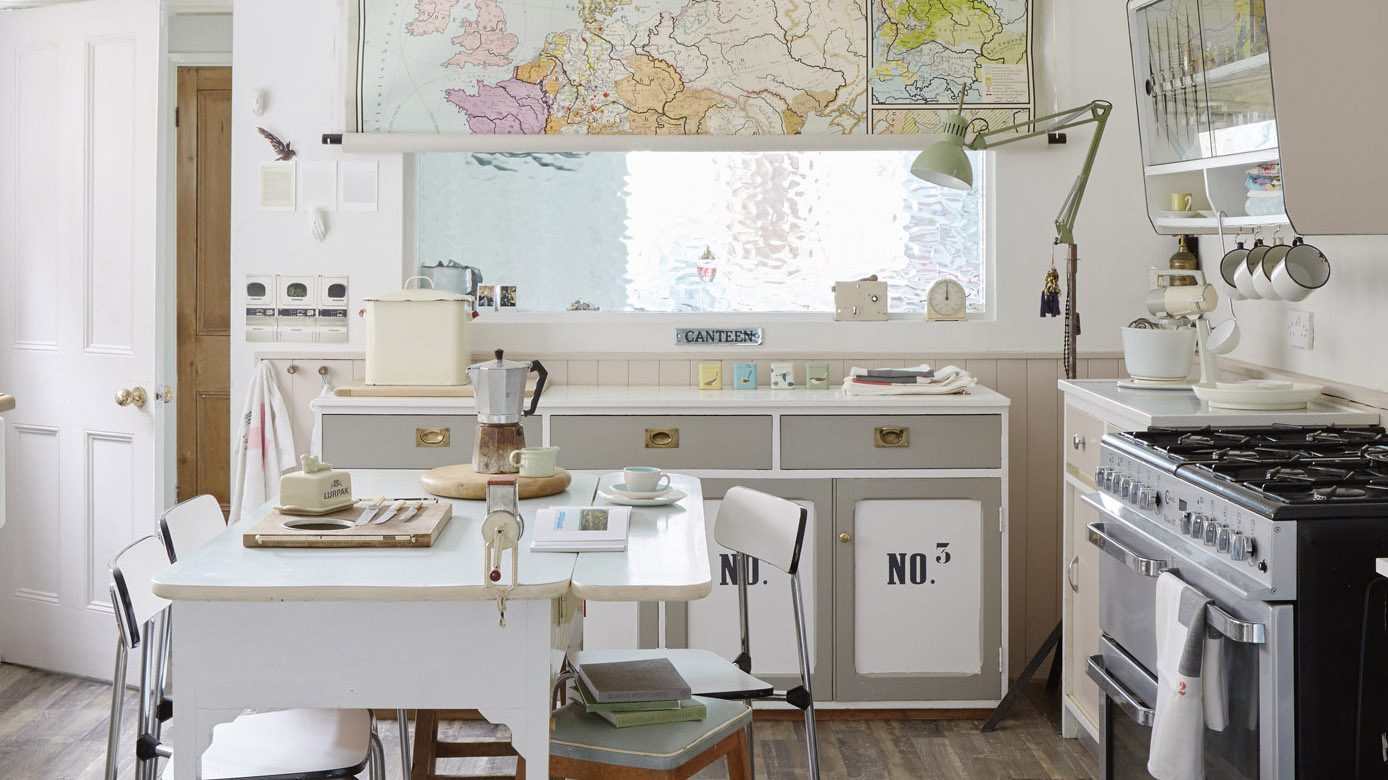
THE STORY
Who lives here? Claire Baker, an embroidery artist and college lecturer, lives here. Her three grown-up children live nearby.
Property A late-Victorian terraced villa in County Durham.
What she did Claire replaced the existing bathroom and kitchen fittings, stripped walls of wood cladding and replastered, sanded and stained floors, repaired cornices and plasterwork, and redecorated throughout.
First impressions of the house her parents bought when she was just 11 years old stayed with Claire Baker, and she remembers exactly how she felt about it when she looked round.
‘It was amazing,’ she says. ‘It was so scary and dark. An old lady had lived in one room downstairs for years. It still had all the original Victorian fittings – beautiful tiles, the servants’ bells and box, and a tiny, wooden-panelled bath – but it was so dark and dingy.'
Read on to see why Claire Baker fell in love with this impressive Victorian villa, then browse through more real home transformations and learn more about renovating a house.
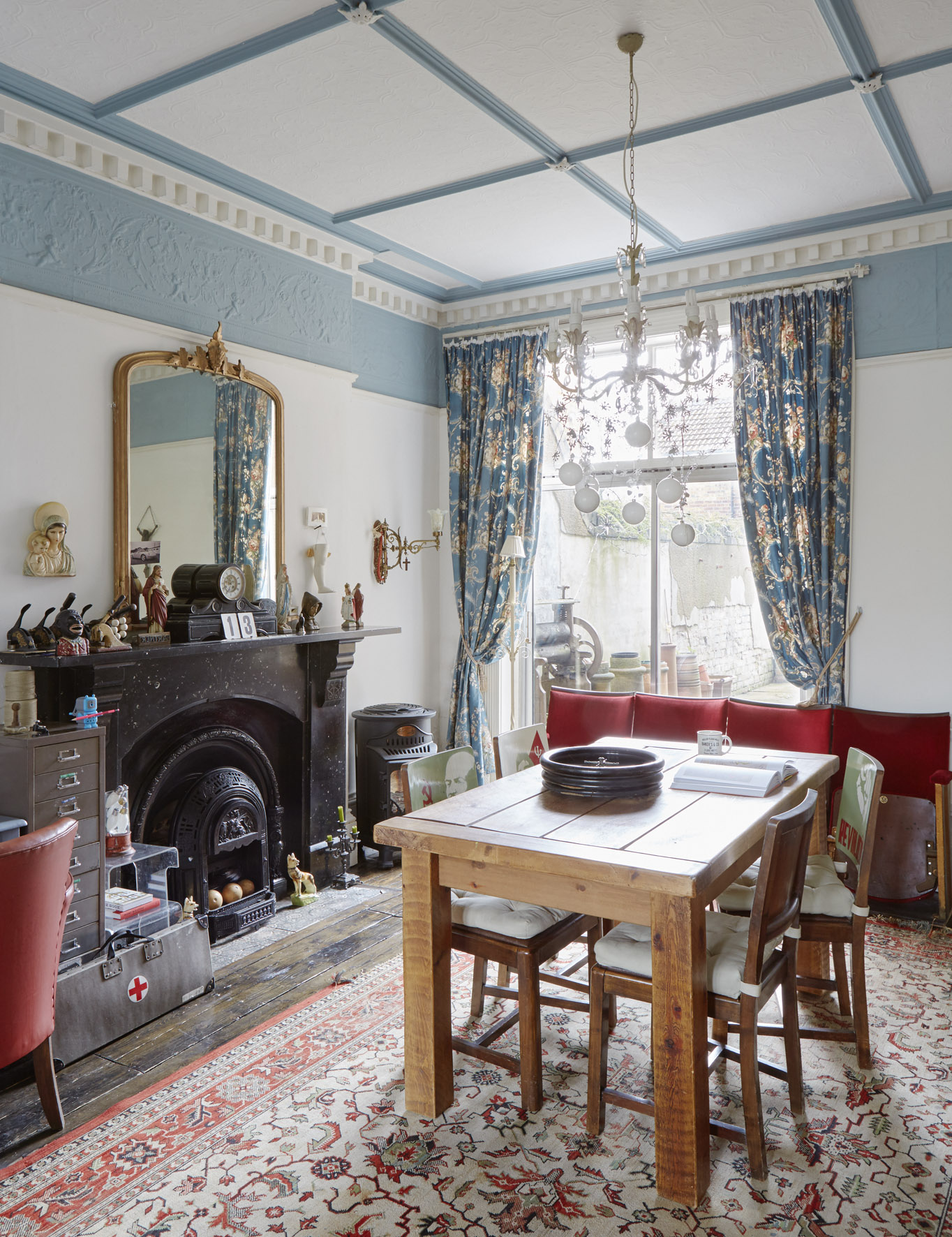
Claire embellished her mother’s elaborate chandelier with white Ikea baubles for Christmas, then kept them because she liked the effect. The gilded overmantel mirror also dates from her parents’ time in the house, but the roulette wheel is a recent auction purchase
So began Claire’s first phase of living in the late-19th century villa, with its broad bay windows and decorative, diamond-patterned brickwork. From 11 to 18, she lived there with her parents and two sisters, little imagining that some 30 years later, as a mother of three and having lived in Manchester and Germany, she would be back.
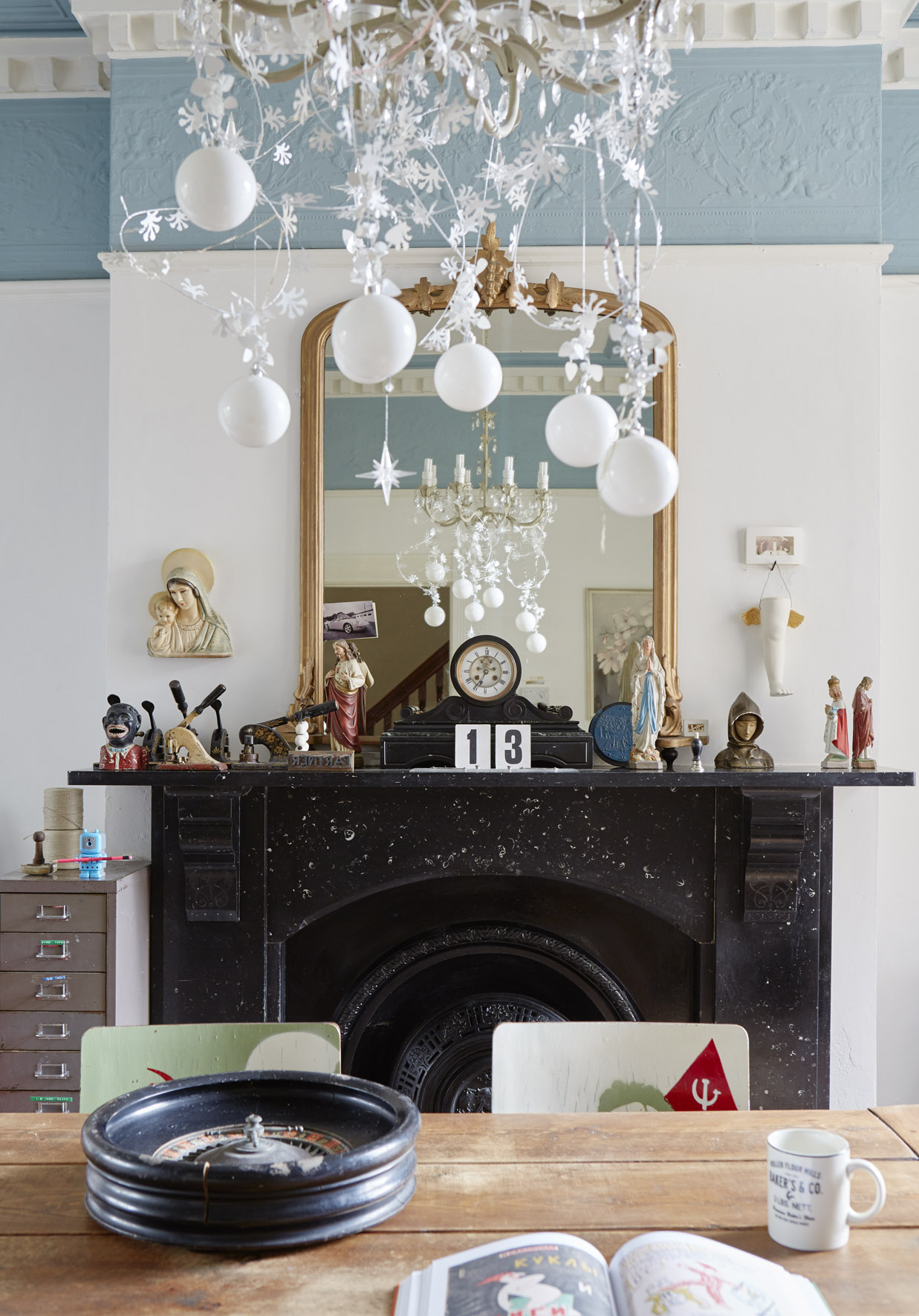
Claire bought the Joan of Arc statue in Paris. ‘She is very chipped and a little creepy, but I wouldn’t part from her,’ she says. The porcelain leg sculpture with golden wings is a piece of artwork cast from an old doll mould by her sister Alison of Venus Ceramics. The Infant of Prague plaster statue was given to her by a friend.
‘I had split up with my partner and moved to a little house around the corner,’ she says. We have a big, extended family here so there was lots of support, but at the age of 15 my son Max had outgrown his box bedroom and the twins, Lucy and Laura, were 12, so it became crowded. At the same time my parents were considering looking for a smaller home. It seemed natural to swap.’
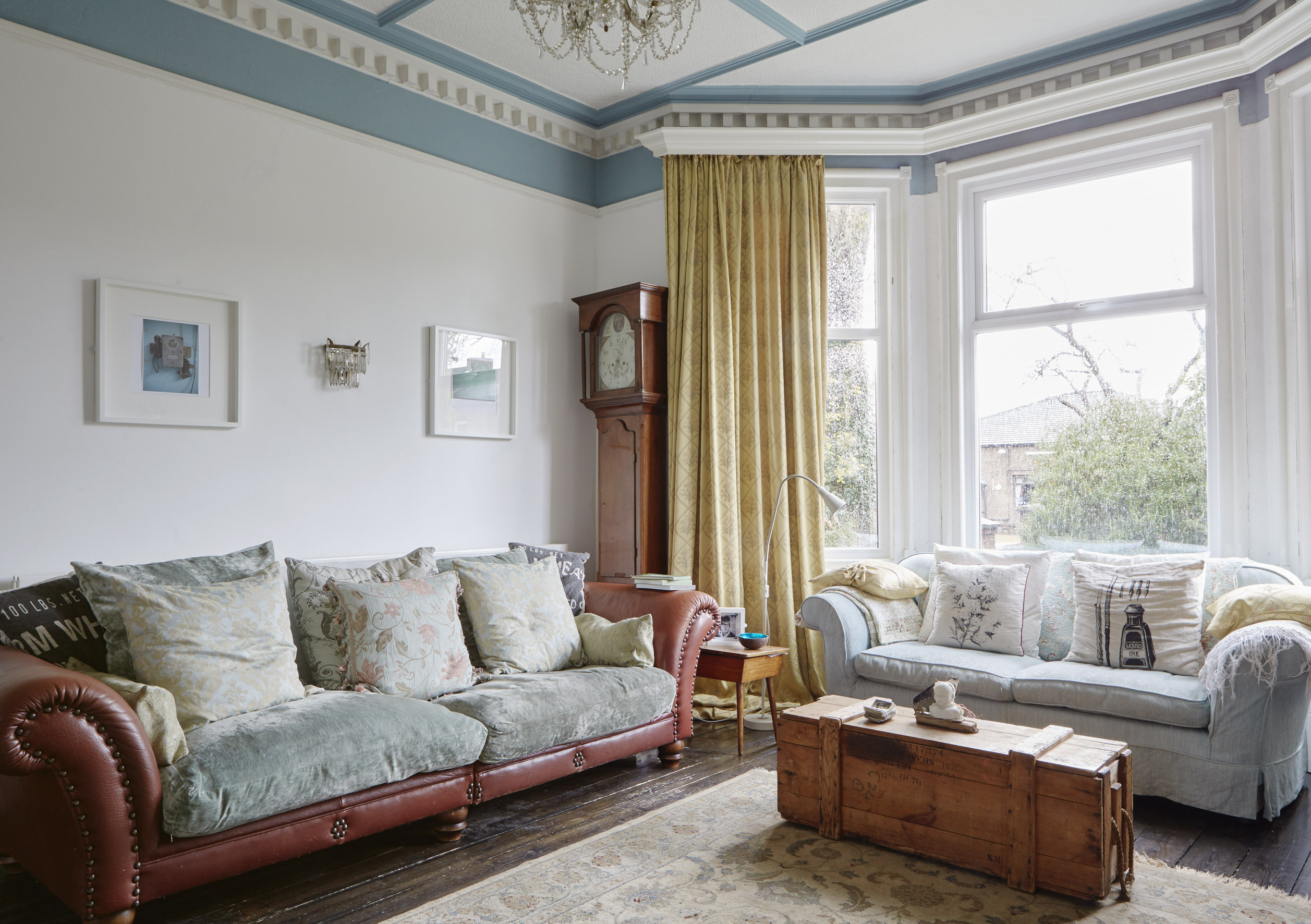
White walls emphasise the space in the living room, with the ceiling framed in blue, as in the drawing room. Claire stitched together eight short curtains, found at a car-boot sale, to make drapes to fit the huge wide bay, then lined them with surplus raincoat fabric. The sofa is a charity shop bargain. The antique longcase clock was Claire’s mother’s but was too heavy to move
She was relieved and delighted, but still felt a bit apprehensive. ‘I knew I couldn’t live in it as it was,’ she explains. ‘My mum loved Victoriana and dark wood furniture, and it was packed with knick-knacks. Although I kept some of the pieces, I wanted to make it my own straight away. The easiest thing was to put a lot of the furniture in storage.’
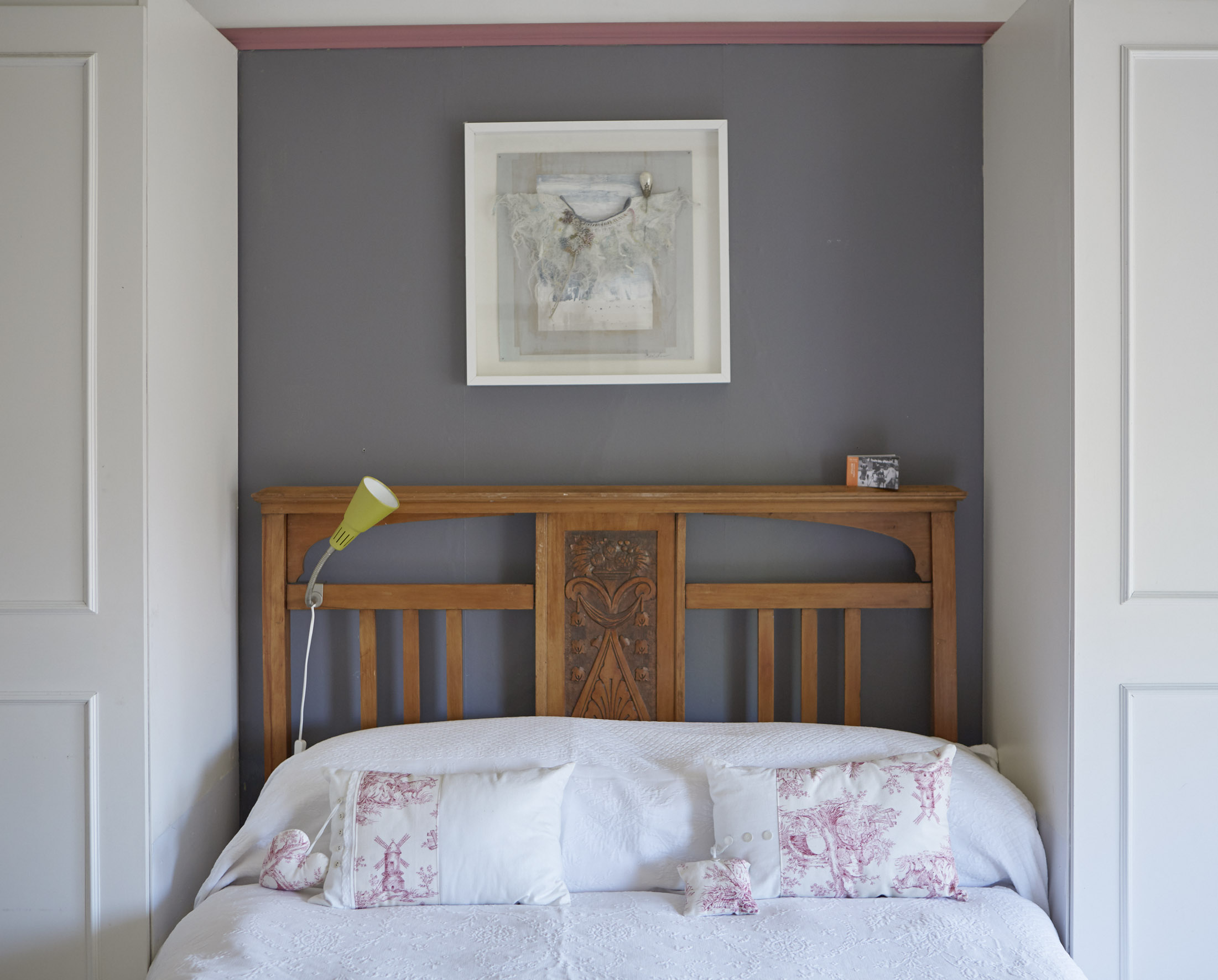
One of Claire’s own pieces, made from hand-felting on a vintage collar, now hangs above the oak bed from Boldon Auction Galleries. The bedspread is from a Colin Caygill antiques fair, and Claire made the cushions from Sanderson's toile de Jouy remnants. The clip-on spotlight is from Ikea
Paring back became her priority, starting with taking down the elaborate curtain treatments to let in more light. Next was the wallpaper. ‘I love the distressed look of old plaster walls, where the wallpaper has been stripped off to show the dusky pinks,’ she says. ‘But when I stripped the walls, it was just grey plaster. I was so disappointed.’
Get small space home decor ideas, celeb inspiration, DIY tips and more, straight to your inbox!
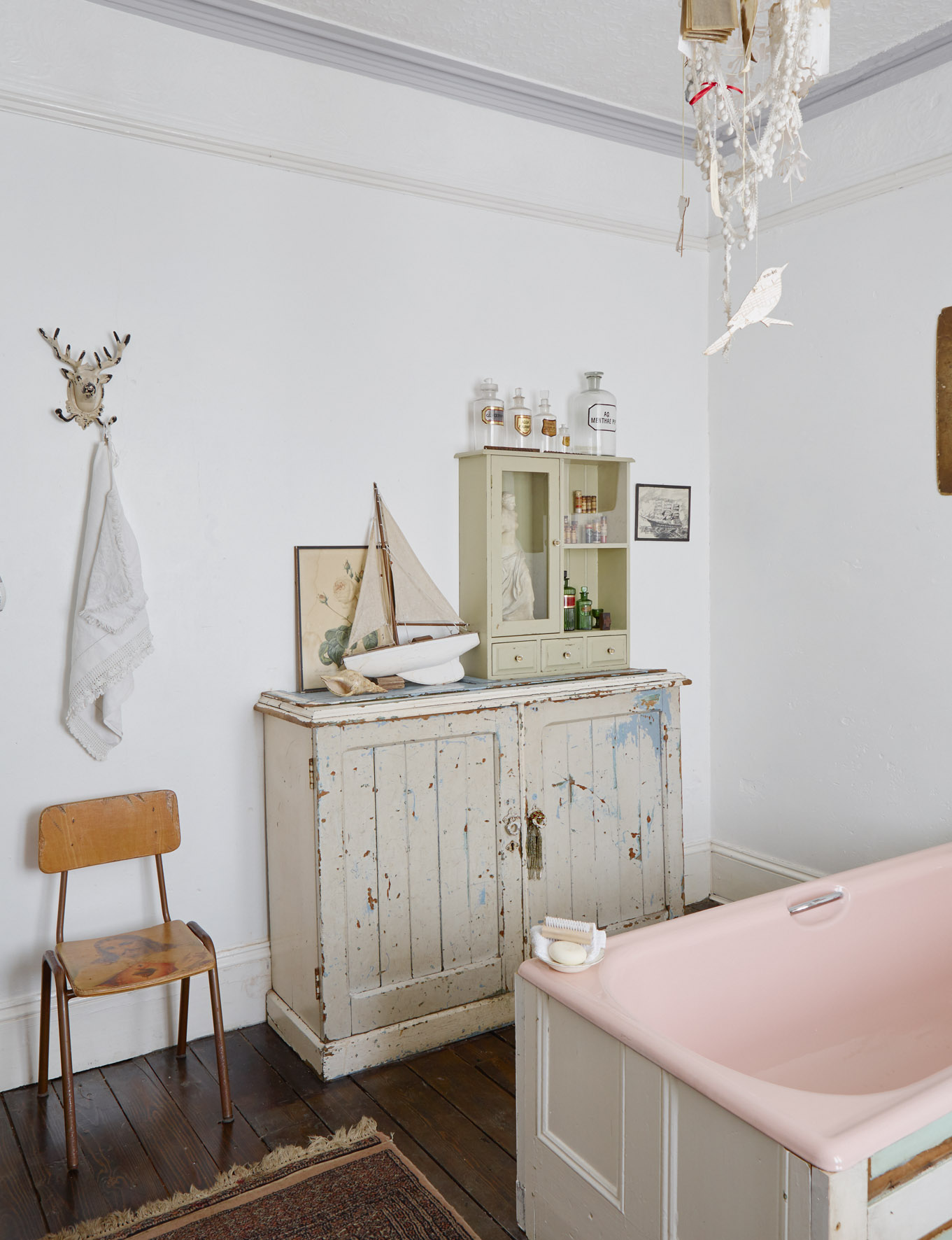
A painted cupboard from Claire’s father’s workshop bears all the scuffs and marks of age. The bath panels are made from old doors, still in their original paint, from Northallerton Auctions.
'For the first seven years, there was little spare cash to make changes. I lived for quite a while with a minimal amount of furniture and I have done everything on a shoestring and in stages.’
Four years ago, though, she was ready for something more radical, and the period piece bathroom was first on her list. ‘It was very 1970s,’ she says. ‘It had thick brown carpet, and my dad had built steps going up to the bath. There was William Morris wallpaper and an avocado suite. I didn’t have time to sand the floor myself, so I went for white floor paint, and the 1950s pink suite was reclaimed from a house that was being renovated. I think I paid £50 for that.’

A matching vintage kitchen table, dresser and cupboard, bought for £300 on eBay set the room’s contemporary style. Claire teamed them with a pair of glazed wall cabinets from Kiwi Trading and a heavy sideboard from her father’s workshop, now painted. The dining chairs were also an eBay buy and the stool came from York racecourse car boot sale. A school pull-down wall map found at the Lincolnshire Antiques & Home Show screens the window. Two of the industrial metal light shades came from eBay and Claire bought the third from a friend.
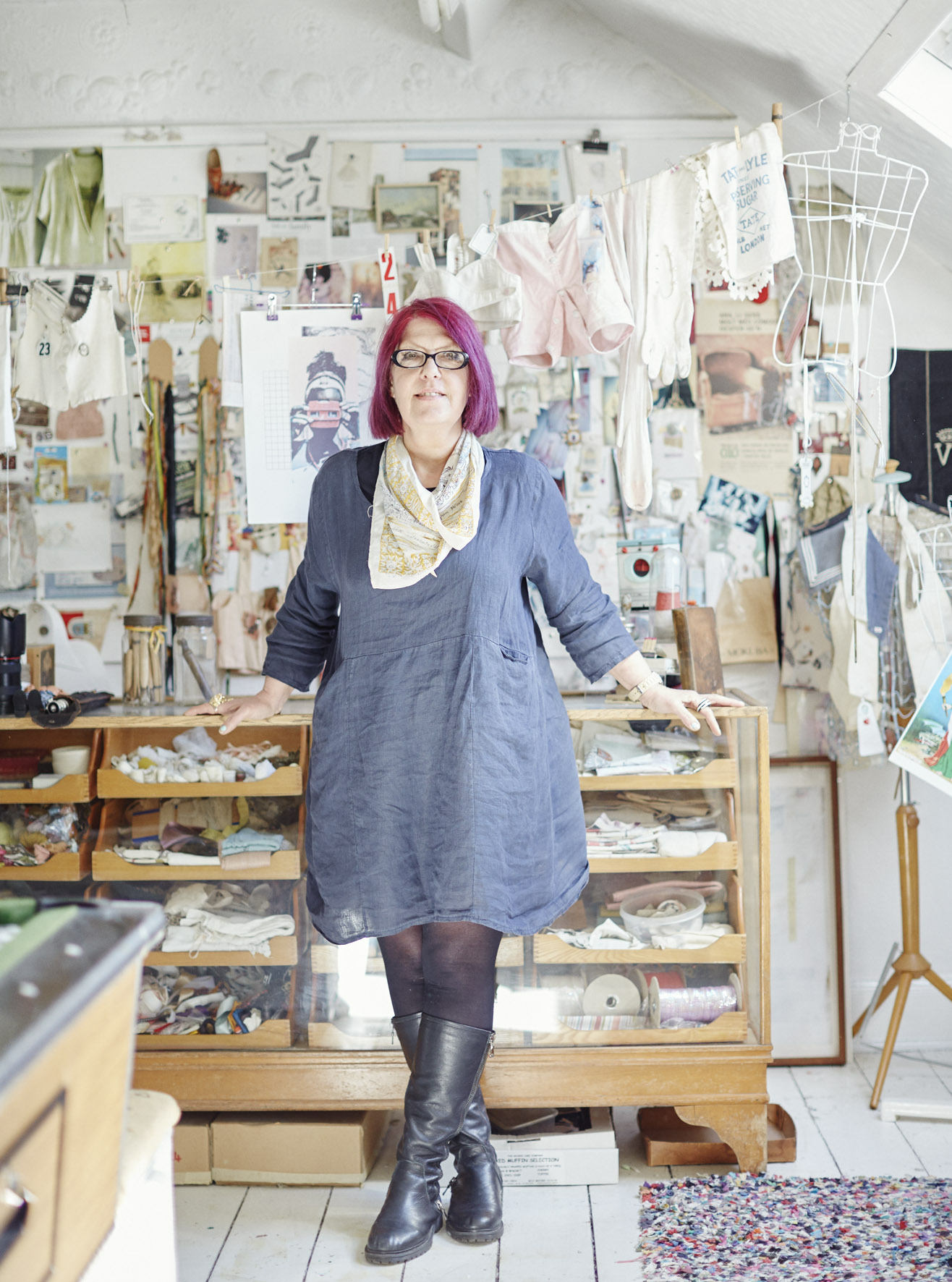
Inspiration is everywhere in Claire’s studio. She bought the drapers’ cabinet at Boldon Auction Galleries and stored it for years in a friend’s garage. Now it’s stacked with her vintage textiles and trimmings
MORE FROM PERIOD LIVING
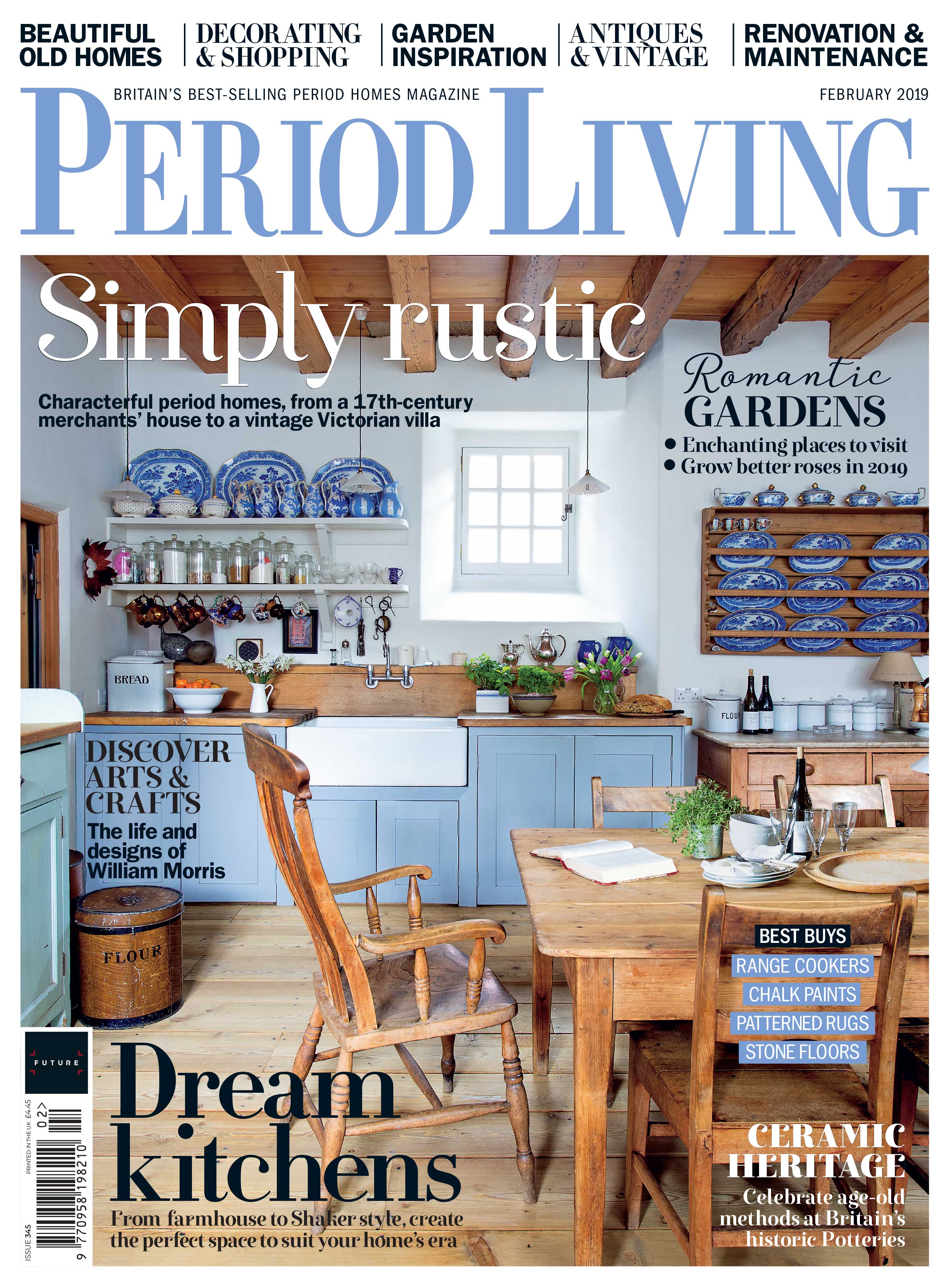
Period Living is the UK's best-selling period homes magazine. Get inspiration, ideas and advice straight to your door every month with a subscription.
The transformation was dramatic and the cool pastel colours set the tone for the next job. ‘I finally ripped out the brown kitchen,’ says Claire. ‘People who came around loved it – they thought it was great, but I bet they wouldn’t have lived with it.
‘It took me eight or nine months and cost £2,000 altogether to get everything ripped out, walls plastered, a new floor, and to source all the furniture. I was constantly online, looking for cupboards and dressers, and going to auctions, ready to buy as soon as I saw something I liked.’
Each year since has seen further work, from repairing plasterwork to redecorating, as she gradually revisits each of the many large rooms. The most significant recent project was to tackle the staircase.
‘It was fully carpeted and where the roof had collapsed – 20 years ago, so not on my watch – it was black around the edges and quite worn,’ she says. ‘I decided to lift it up before I could afford to replace it, and then a Catholic priest friend moved into a new presbytery and gave me this carpet from one of the rooms, made from strips stitched together. It’s really good quality.’
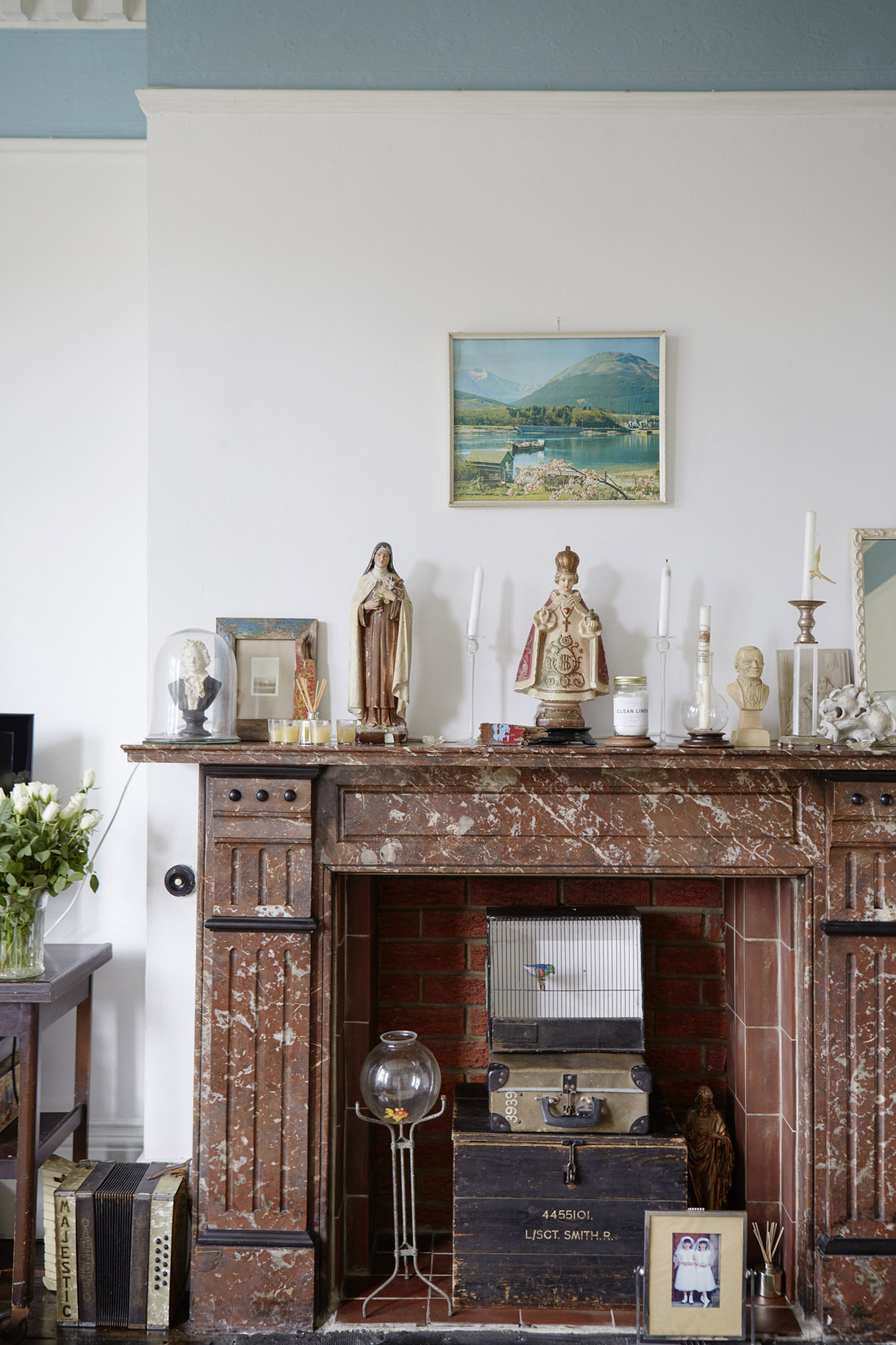
The original Victorian fireplace in Rouge Royal marble has always been a striking focal point in the formal sitting room. Above it a £1 painting of an Irish lake scene now hangs, chosen by Claire for its Instagram-like saturated colours and similarity to the pictures she has seen in abandoned Ukrainian homes on research visits to Chernobyl. The ex-military wooden chest came from a local auction. Claire can’t resist the faded pastel shades of the plaster statues she remembers from her childhood: the Infant of Prague plaster figure on the mantelpiece came from Northallerton Auctions and the Sainte Thérèse of Lisieux statue was from Newark antiques fair.
Claire has an artist’s eye for form and texture, and bright white walls are a good backdrop for her mid-century modern and period furniture, vintage textiles and sculptural lighting. ‘Although I work in the creative industries and I’m a designer, I find it really difficult to choose colours for the house. I would be quite happy with everything white. I’ve found myself using the colours I use in my work all the time – ice cream and sorbet colours, 1950s pastel shades. I think they are sensitive and not overly feminine. It’s quite subtle and relaxing, and I can dress them up with whatever seems to fit.’
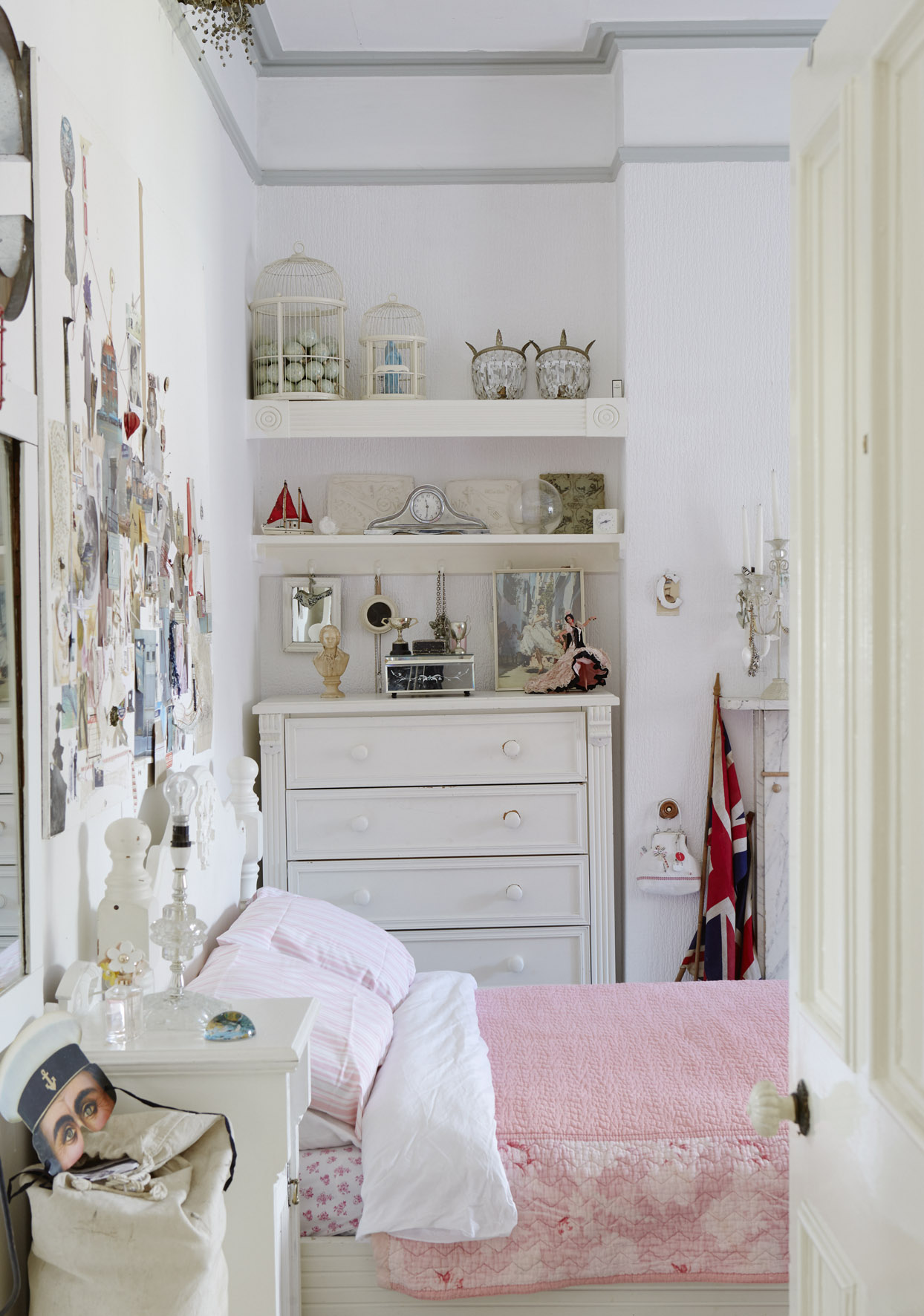
Above the bed hangs an inspiration board featured in a past solo exhibition ‘Claire Baker Collector’, modelled on her studio wall. Her rose pink bedcover, a £5 bargain at Northallerton Auctions, is one of the popular ‘The Comfy’ reversible quilts, machine-made with a distinctive zig-zag pattern by the British Quilting Company. The pillowcases are a charity shop find
It is Claire’s collections, though, offbeat and intriguing, that give this home its character. Junk shops, car-boot sales, auctions and charity shops have yielded a variety of treasures: plaster statues, vintage laboratory crucibles, handmade quilts, sepia photographs, and tiny combat outfits for Action Men. All have a place in her curated displays.
‘There is no particular period that I collect, it is just the beauty of the design and the subtle colours,’ she says. ‘I just know when I see something how it will go with something else in the house.’
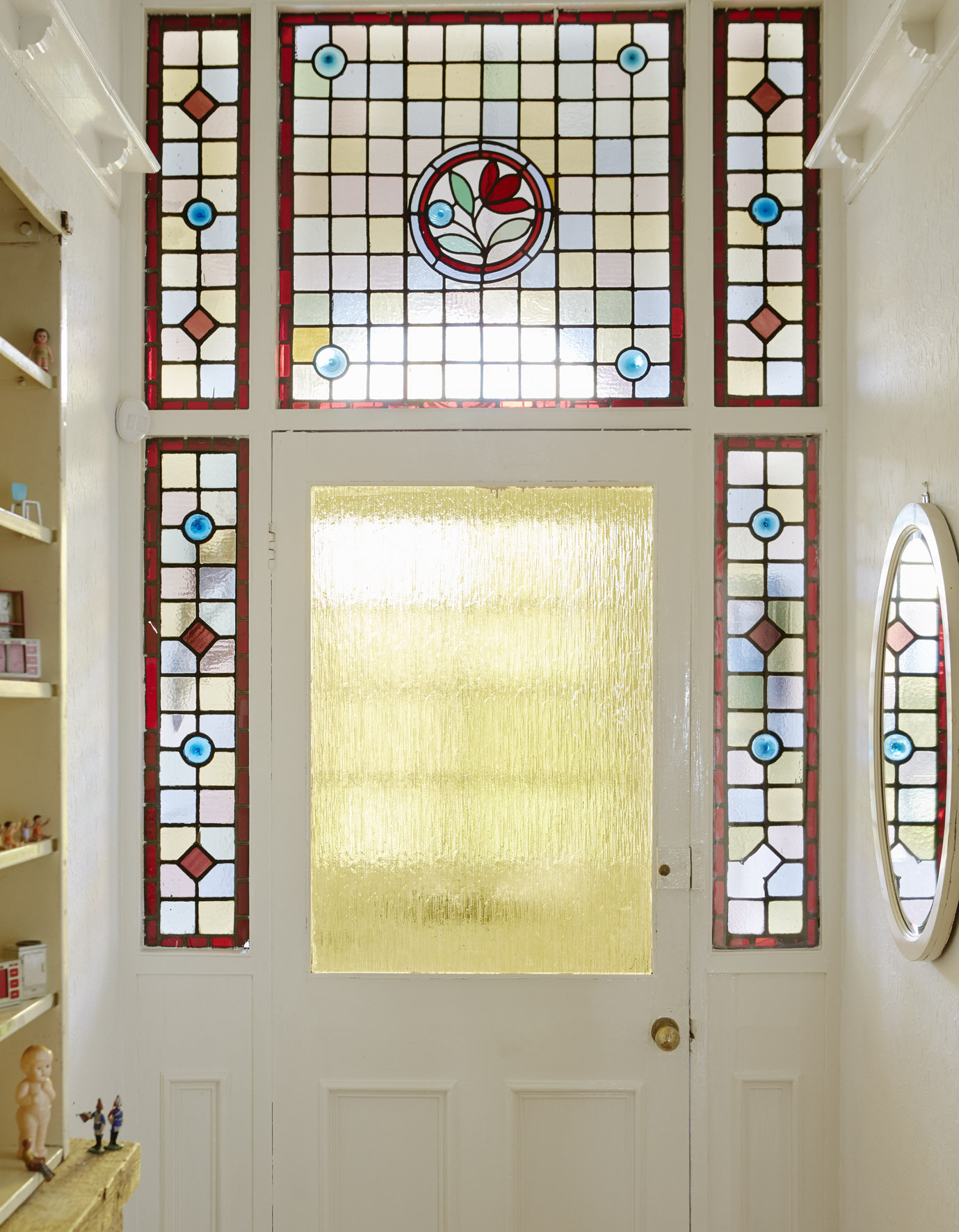
Claire’s sister is planning to restore the hall door’s original central stained-glass panel
Even now that her children have left home, she has no wish to move on; the property is coming into its own. ‘I really enjoy the space,’ she says. ‘I have grown fonder of this house, although I have always loved it. It is an extension of me, and because I have history with it, that makes it more mine.
‘I have surrounded myself with things that either mean something to me, or that are beautiful. This is how I want to live; that’s the beauty of living alone. You don’t have anybody’s taste imposed on you, and you don’t have to compromise.’
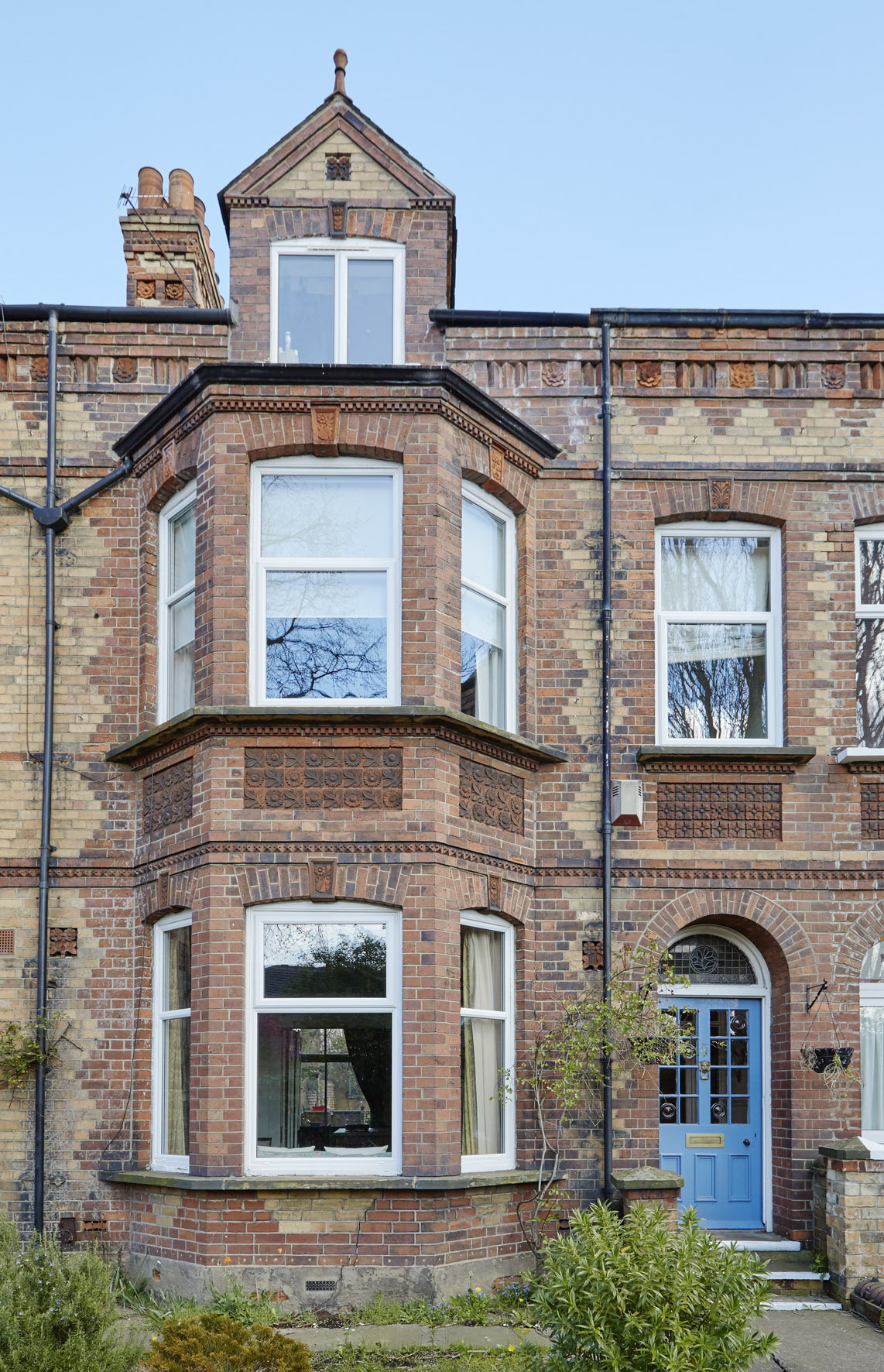
As her three children outgrew the bedroom space in their smaller house nearby, Claire and her parents agreed a house-swap for her childhood home, a three-storey, late-Victorian villa.